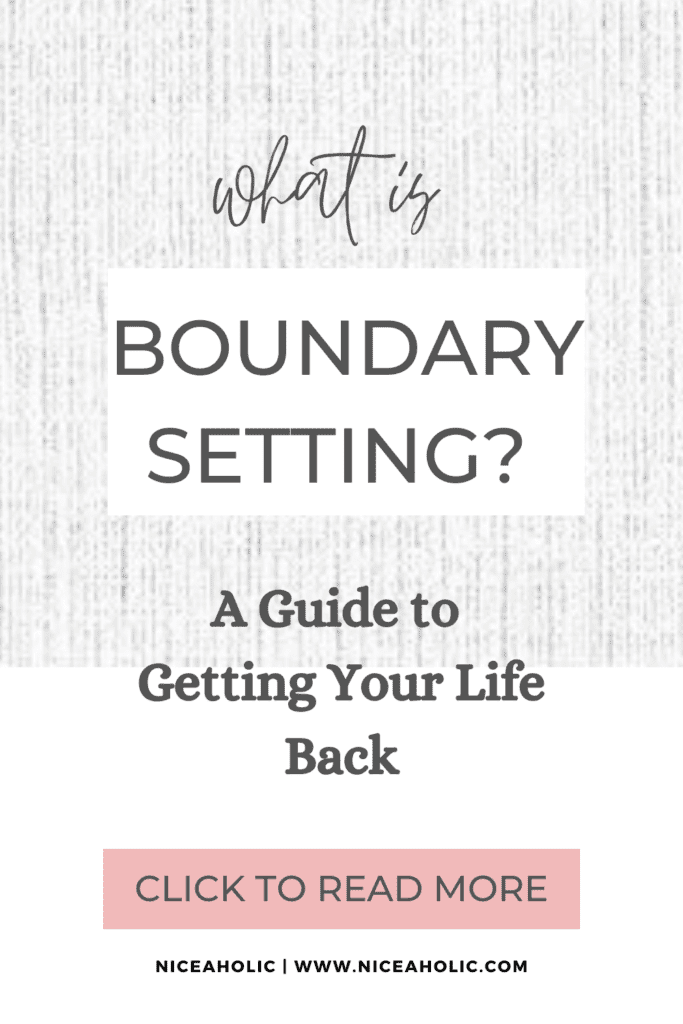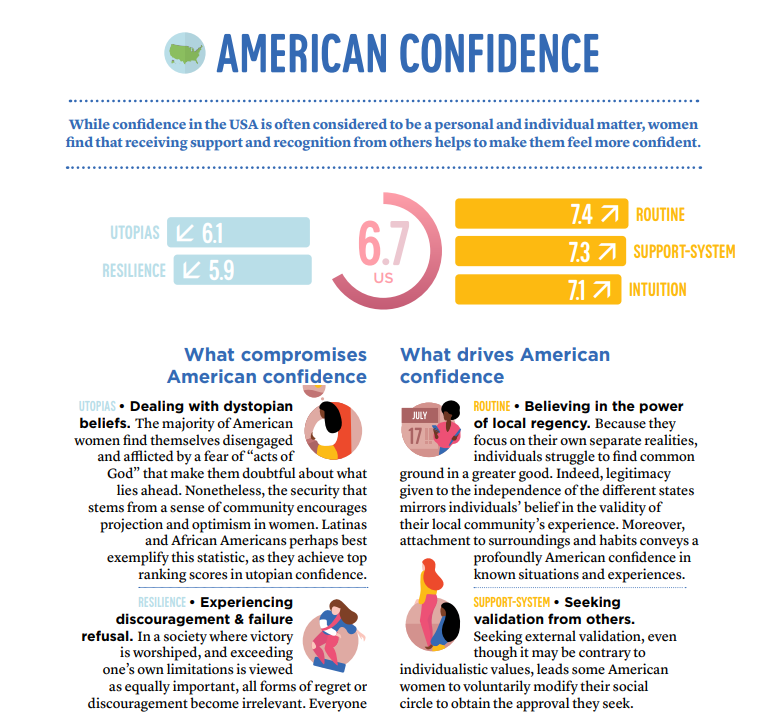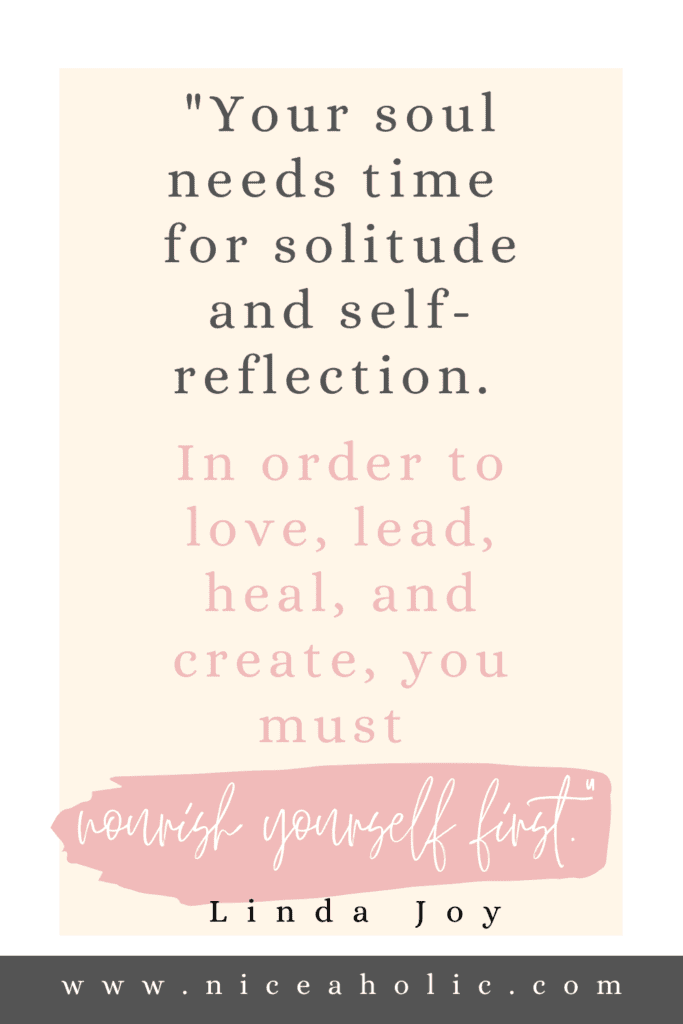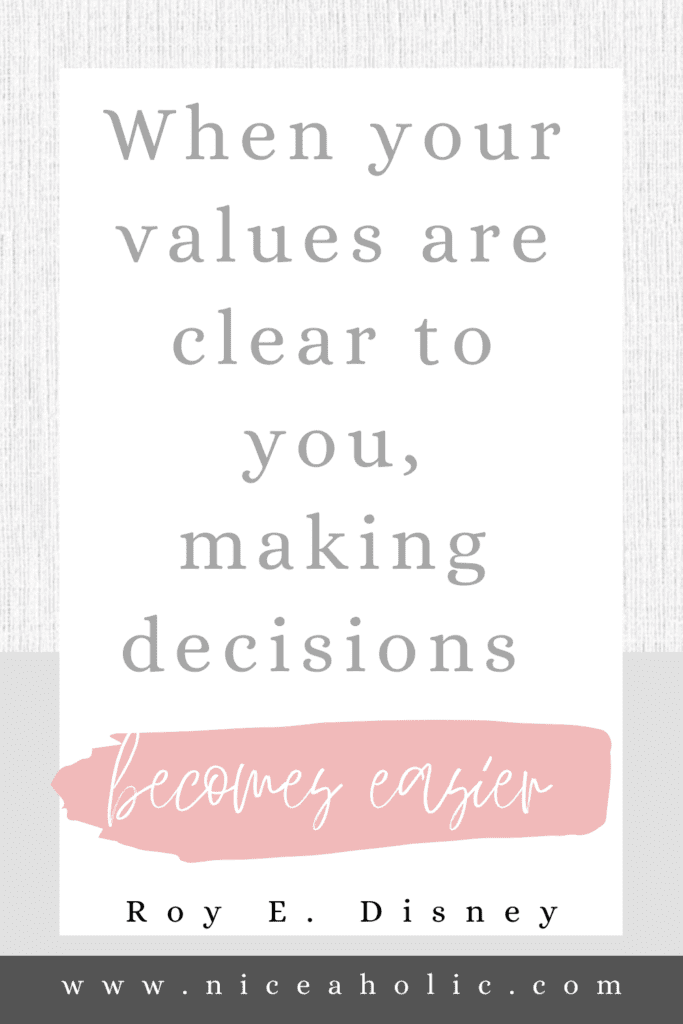What Is Boundary Setting? A Guide to Getting Your Life Back.

What is boundary setting you ask?
As we know too well, the goal of every niceaholic is to help others without being consumed by their requests and still be able to achieve their own goals and dreams.
But with your giving heart, it’s hard to set boundaries so you can have time to work on what’s important to you.
Oftentimes, it just comes down to misguided strategies.
Putting other’s needs ahead of your own won’t work long term because it’s just not sustainable.
Maybe you’ve been avoiding people in the street and not answering their calls and wondering why they aren’t getting the hint.
Overtime, it can make you feel resentful they don’t leave you alone.
Today, you’re in luck!
I’m going to share a boundary system that will help you identify what is important in your life, recognize your triggers (and the people doing triggering 😊) and create kind boundaries, without spending hours of time agonizing about it.
I’ll cover boundary setting, how it works, and how you can get started.
Keep reading for more details.
What Is Boundary Setting?
Boundary setting aims to create an invisible fence that protects you from emotional attacks, helps keep your decision-making process aligned to your values, and reduces the chance of you being pushed around by others.
It works by setting the ‘rules of engagement’, what you will and won’t accept when people interact with you.
Boundary setting also dictates what will happen if people overstep your boundaries and ignore the no trespassing sign.
We often think setting boundaries is mean, like we are doing it to punish people, but that is not the case at all.
Boundary setting is for you, to take care of your well-being. Its purpose is not to hurt other people.
Let me explain.
If you have grown up in a home where your needs always came last, or if you have experienced traumatic relationships in the past, where you weren’t allowed to have your own voice, boundaries will probably feel very unfamiliar to you.
So, in these dysfunctional dynamics from your past, you wouldn’t have learned how to set kind and respectful boundaries because the people around you were immature, and just wanted you to do what you were told.
These people didn’t want you to learn about boundaries, as they were the ones who benefited from bossing you around and using you.
Without boundaries you get hurt and used, so they are useful in drawing a line (or building a fence) and keeping these types of people on the outside in the future.
When you know who you are, what’s important to you and what triggers you, it helps you navigate tricky situations more easily.
Boundaries are also a wonderful tool in restoring your self-confidence and self-respect, if you’ve been through a difficult time in your life.
Download now: Beautiful Boundaries Planner.
Why Is Boundary Setting Important?
Boundary setting is important because if you can’t say no to people, it really affects your confidence.
So why do we find it so hard to have faith in ourselves?
According to the Women’s Confidence Report, American women tend to rely on external validation for building confidence instead of finding strength within themselves.

Women’s confidence is strongly affected because the vast majority of us care deeply about what our inner circle thinks of us and, as a result, prioritize their needs over our own.
We give our precious time to our friends and family in the hope we receive the validation we crave.
By implementing boundary setting, you’ll be able to take back control of your time and your life.
This way, you will create the space to work on your own goals and dreams instead of giving your precious time to help others achieve theirs.
Also, boundary setting gives you the ability to deal with conflict easily, which in turn strengthens your confidence.
The threat of conflict becomes less of a worry as you know you are capable and can handle it when it comes your way.
That means you won’t have to dodge phone calls and avoid running into people you know in the street, as you know how to stick up for yourself and say no.
Other benefits you get from Boundary Setting:
Increased self-respect
When you set boundaries, you send a message to yourself and others that you value and respect yourself.
You are prepared to create healthy limits on what you’re willing to do and how you’re willing to be treated.
Reduced stress and anxiety
By establishing clear boundaries, you can reduce feelings of overwhelm and anxiety by prioritizing your time and energy in ways that align with your needs and values.
Improved relationships
Setting boundaries can help you communicate more effectively with others, and create stronger, healthier relationships based on mutual respect and understanding.
Increased productivity and success
By setting clear boundaries around your time and energy, you can focus more effectively on the things that matter most to you.
This leads to greater productivity and success in all areas of your life.
Overall, taking action and setting boundaries can help you live a more fulfilling, authentic, and successful life.
By prioritizing your own needs and values, you can create a framework that supports your growth and well-being and allows you to make the most of your time and energy.
Boundary Setting Strategies
If the boundary setting sounds overwhelming, I get it.
It’s all well and good to say put boundaries down, but the thought of speaking up makes you feel physically sick.
So, I put together the strategies below to break it down for you, so you can easily get started with boundary setting.
Strategy #1. Self-Reflection

Self-reflection is turning inwards and thinking about why you want to set a boundary in the first place and what’s making you hesitate to put boundaries down.
Although this may seem counterintuitive, as it’s the surrounding people pushing you around, but it’s actually a critical step in the boundary setting process.
Plus, as overloaded and overwhelmed niceaholics, we rarely stop to check in with our values, or goals.
We’re just busy getting through our never-ending to-do list.
Self-reflection is a perfect time to see if where you are heading in life, is really somewhere you want to go.
Self-reflection involves things like:
- Writing down your values and vision for your life.
- Recording a list of what is important to you.
- Thinking about your daily habits and whether they are helping or hurting you.
- Looking at the relationships in your life and whether these people support your life goals.
- Doing a weekly audit on how you spend your time and noting what % is for you.
Completing this process means you know what is important to you, what you stand for and where you are going in life, so you can live more intentionally.
It makes your decision making clearer. You are sure of what you need to do and can say no more easily to things not aligned with your goals.
Strategy #2.Being ok with disappointing people.
The faster you can let go of other people’s expectations, the easier it will be to set effective boundaries.
That’s where being ok with disappointing people comes in.
It’s probably the biggest thing that holds us niceaholics back from setting boundaries, is letting people down.
However, you can take some baby steps towards letting this go from your life.
Change your mindset
Let’s start by thinking about why you feel so responsible for sheltering adults from the consequences of their own decisions.
Is it helpful they never get the learning experience from the choices they make?
By constantly being the buffer, you are training them to rely on you, instead of themselves.
This is probably nice, but it’s not kind to you.
A little zinger for you. Why do you need them to depend on you? What does that give you?
Learning to let people down can actually be good for both of you.
For example:
When I became a single parent, I realized the people I was supporting and caring for weren’t there for me.
I felt this compulsion to keep the friendships alive because I felt I was letting them down by not putting in the effort.
I was struggling though, and couldn’t go to the social outings, pick up things for them, or visit them as much as I had a young child and no family nearby.
The feeling of seeing that text message come in and there’s nothing I can do was just awful, but I was at full capacity and had to let it go.
You know what happened?
Nothing.
Life carried on.
They found people in their network to take my place and I was free of my self-inflicted job of being there.
Letting these people go ended up being the best thing that ever happened to me.
I wish I had stopped hanging on to the fear of disappointing them a lot sooner.
Start with small steps
The best way to implement this is to start small.
Start saying no to less important things first.
- Don’t immediately pick up the phone when they call or text.
- Skip meeting them for a drink after work.
- Tell them you can’t come over this weekend.
Being from a finance background, I always work in ratios. I find it helps so much to take the emotion out of it.
So, for every request you get, say no to one out of four of them.
Then every second request and so on, until it gets easier for you to say no, and you can do it when you need to.
Strategy #3. Put the focus back on yourself.
The issue with setting boundaries for niceaholics is our hyper-focus on other’s needs.
The people pleasing techniques we have used in the past have kind of worked but are now turning against us.
We have become used to dropping everything when someone needs us.
But what about you hun? Where are you in all of this?
Every yes to a friend or family member is a no to yourself.
You are giving them your most precious resource, your time, and you will never get it back.
When you put the focus back on yourself, it makes it so much easier to put boundaries down.
For example:
- When you know family is one of your values, it makes it easier to say no to overtime.
- If you are starting a business, you know you can’t take calls during the day.
- When someone is raising their voice you know you need to address it, or you’re going to worry about dealing with them next time.
Learning to set boundaries aligned with your values and goals, and putting the focus back on yourself, takes away all of this stress for you.
You need to care a little more about your well-being than you currently care about other people’s.
Not to the extreme of being obnoxious or selfish, but you can’t care for other people if you are an overwhelmed wreck.
Tips for Boundary Setting Success
Here are a few tips to help you maximize your results with boundary setting.
First, observe the undesired behavior
To achieve the best boundary setting results, you need to be a curious scientist.
On the lookout for situations where people are making unreasonable requests or behaving in aggressive or hurtful ways.
When you notice the behavior, it does a few things:
- Makes you realize how often it is happening.
- Gives you an opportunity to reflect on how this is holding you back in life.
- Causes you to think about why these people are behaving this way.
- Reflect on your own feelings and identify what exactly is triggering you and why.
When you step into curious scientist mode, it helps make the behavior feel less personal.
This will help you identify the biggest offenders, see what they are doing, why it bothers you, and why they are doing it.
Knowing what is motivating the manipulation is also gold.
Then you can address that underlying issue with kindness, instead of responding purely to the poor behavior.
For example:
Your teenager is snappy with you after school. #truestory
This upsets you because you haven’t seen them all day, and until 10 minutes ago, were happy to see them.
Instead of snapping back, or telling them to watch their tone, think about what is causing the behavior.
Have they skipped lunch? Had a bad day?
Observe them first, before jumping into battle, as it’s probably not you that’s causing the unhappiness.
Ask them some clarifying questions to see what the genuine issue is because it’s usually not just rudeness or disrespect.
Once you know what it is, you can feed them, give them space to process their day, support them with any tricky issues or whatever they need.
Make Sure to Follow Up
Afterwards, you can address the way they expressed themselves, and give them some more appropriate ways to respond in the future.
For better results, make sure you observe and respond to the underlying issue and address the behavior another time.
This way, you’ll find they are more open to listening to your point of view and are less confrontational when they aren’t distressed and triggered.
Related Post: How to stop feeling guilty when setting boundaries the first time.
Next, assess what you need.
When you assess the situation in front of you, and how you would prefer it to play out, you can create a structured boundary that is not only aligned with your values, but also your priorities.
Assessment is evaluating your own values and priorities to determine where you need to set boundaries and what those boundaries should look like.
This involves reflecting on what is most important to you and what you want to achieve in your life.
It’s essential to identify the areas of your life where you feel most vulnerable or stressed and determine what triggers these negative emotions.
For example, if you’re feeling overwhelmed at work, you may need to set boundaries around your workload or schedule to ensure you have enough time for self-care and other important activities.
Additionally, it’s important to assess your relationships and determine where you may need to set boundaries with others.
This can involve identifying patterns of behavior that are not aligned with your values, such as disrespect or manipulation, and setting clear limits to protect yourself from these negative influences.
By assessing your own values and priorities, you can identify the areas where you need to set boundaries and take action to create a more fulfilling and authentic life.

To get started:
Reflect
Take some time to reflect on your own values, needs, and goals. Consider what is most important to you in different areas of your life, such as work, relationships, and personal growth.
Ask yourself what you want to achieve and what makes you happy and fulfilled.
Analyze
Once you have reflected on your values and priorities, analyze your current situation and identify where you are experiencing stress or discomfort.
Consider the specific behaviors, situations, or people that trigger you, and evaluate how they align with your values and goals.
This can help you identify the areas where you need to set boundaries.
Plan
Once you have identified the areas where you need to set boundaries, create a plan for how to do so.
This may involve communicating your boundaries to others, setting limits on your time or energy, or creating physical or emotional distance from certain people or situations.
It’s important to be specific and realistic in your planning, and to prioritize self-care and respect for yourself and others.
Finally, Take Action and Set the Boundary
Niceaholics, prefer to avoid setting boundaries because it makes them feel really uncomfortable and guilty.
If you want to take charge of your life and achieve your own goals and dreams, you can’t overlook this crucial step.
So the last step (you know what’s coming next!) is to take action and set your boundaries.
This can involve communicating your limits and expectations to others, saying “no” to requests that don’t align with your values.
Creating physical or emotional distance when necessary.
It’s important to be assertive and clear when setting boundaries, while also being respectful of others and their boundaries.
Taking action and setting boundaries is crucial because it allows you to create a clear and healthy framework for how you want to live your life.
By setting boundaries, you establish limits on what you are willing and able to do, as well as what behaviors you will and won’t tolerate from others.
This helps you prioritize your own needs and values, and create more space for things that truly matter to you.
When you take action and set boundaries, you can gain a number of benefits.
For example:
Increased self-respect
When you set boundaries, you send a message to yourself and others that you value and respect yourself.
You will create healthy limits on what you’re willing to do and how you’re willing to be treated.
Reduced stress and anxiety
By establishing clear boundaries, you can reduce feelings of overwhelm and anxiety. You do this by prioritizing your time and energy in ways that align with your needs and values.
Improved relationships
Setting boundaries can help you communicate more effectively with others.
Creating stronger, healthier relationships based on mutual respect and understanding.
Increased productivity and success
By setting clear boundaries around your time and energy, you can focus more effectively on things that matter to you.
This results in greater productivity and success in all areas of your life.
Overall, taking action and setting boundaries can help you live a more fulfilling, authentic, and successful life.
By prioritizing your own needs and values, you can create a framework that supports your growth and well-being, allowing you to make the most of your time and energy.
And if the idea of setting boundaries makes you feel sick, consider these points:
- The emotional discomfort when setting boundaries is only temporary, versus a lifetime of wasted time running after others.
- How proud will you be of yourself when you can say no.
- What is your life going to look like if you keep going and avoid setting boundaries? And what will it look like if you do?
- What could you achieve in your life, once the fear of confrontation and saying no is gone?
If you don’t ever learn to set boundaries, you’re at risk of living a life that’s not your own.
One thing you can do to help is learn the skill of boundary setting.
Grab my free Beautiful Boundaries Planner here.
Start Setting Boundaries Today
I hope this guide on boundary setting has been helpful.
If you take anything away from this guide, remember it is worth being uncomfortable in the short-term to create a life where you can be free from the limits of other’s expectations and live on your terms.
Plus, imagine how proud you will be of yourself that you were brave and stepped up for yourself :).
The best way to set boundaries, is to start with observing the people around you and how you respond to them.
That way, you can set yourself up to create a boundary strategy that will be highly efficient from the day one.
So, what do you say? Are you ready to give it a go?
Free Beautiful Boundaries Planner
Download our free Beautiful Boundaries Planner
Now that you know the ins and outs of setting boundaries, it’s time to grab your Free Beautiful Boundaries Planner and see how easy it is to learn how to set kind boundaries.
The Beautiful Boundaries Planner is 13 stunning pages and features: a trigger tracker to help you identify what (and who 😊) triggers you, your bill of rights, and tips on setting boundaries in influential relationships.
You’ll also find a “What’s Important” page to get clarity on your priorities, and a boundary creator.
Setting boundaries isn’t always easy, but it’s crucial for our well-being and the quality of our relationships.
My hope is that this planner will support you in creating the boundaries you need.
Leaving you to thrive and live a life that truly aligns with your needs and values.
So, if you’re ready to start setting kind boundaries that support your well-being, download my free Beautiful Boundaries Planner today!
Love



Beautiful boundaries
A nice girl’s guide to setting strong boundaries
Get your 13-page guide designed to help you build confidence and say no politely, yet firmly.
Free when you subscribe to my email list as my thank-you gift to you.







One Comment
Comments are closed.